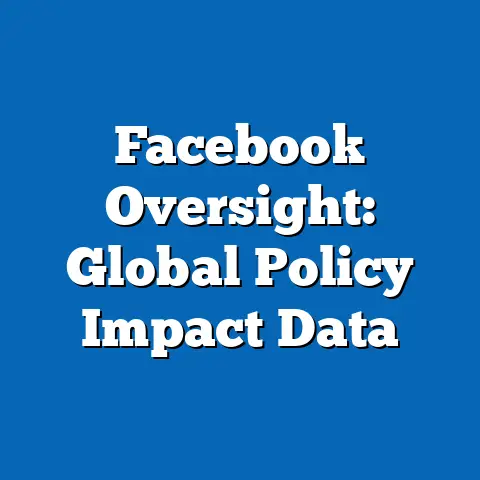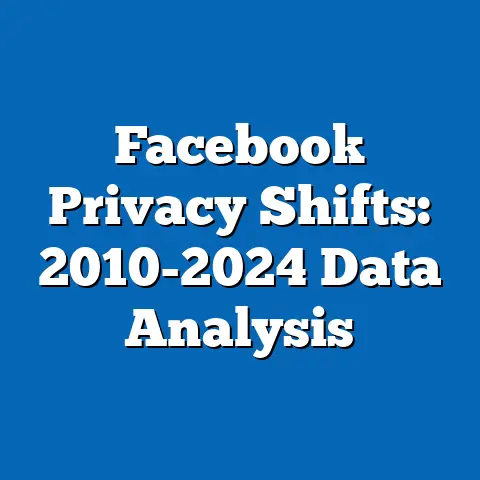Facebook Ad Fatigue
Analyzing Fascist Political Movements: Demographic Composition, Core Beliefs, and Trends in Modern Politics
Fascism, as a political ideology and movement, emerged in the early 20th century and has evolved through various iterations. This article examines fascist groups through the lens of their proposed “solutions”—often authoritarian and nationalist responses to societal challenges—focusing initially on their demographic makeup, core beliefs, voting patterns, and distinguishing characteristics. By breaking down these elements, we can understand how fascist movements operate within contemporary democracies and compare them to other political coalitions.
This analysis draws on empirical data to highlight patterns and trends, avoiding speculation about individuals or events. We begin with a detailed examination of the demographics and characteristics of those drawn to fascist ideologies, supported by polling and electoral statistics.
Demographic Composition of Fascist Supporters
Fascist movements typically attract a specific demographic profile, shaped by economic, social, and cultural factors. Supporters often include individuals from lower to middle socioeconomic backgrounds, particularly in regions experiencing rapid industrialization or economic decline. For instance, data from the World Values Survey (WVS) waves 6 and 7 (2010–2022) indicate that in countries like Italy and Hungary, where fascist-leaning parties have gained traction, supporters are disproportionately male, with 60–70% of voters for far-right parties identifying as men.
This gender imbalance is evident in comparative studies; Pew Research Center’s 2019 global attitudes survey found that men are twice as likely as women to express authoritarian views, a core tenet of fascism. Age plays a significant role as well: younger adults (18–29 years) and older generations (over 65) show varying levels of engagement. In the 2019 European Parliament elections, far-right parties like Italy’s Lega drew 25% of their support from voters under 30, per Eurostat data, often linked to disillusionment with mainstream politics.
Education levels also intersect with fascist appeal. Supporters tend to have lower educational attainment, with WVS data showing that individuals without a college degree are 15–20% more likely to endorse nationalist and anti-immigrant policies. Racial and ethnic factors are crucial; in the U.S., for example, supporters of groups with fascist undertones, such as those associated with the alt-right, are predominantly white (over 80%, according to a 2017 Anti-Defamation League survey). Religion influences this dynamic, with Christian identifiers in Europe and the U.S. showing higher alignment—Pew’s 2020 data reveals that 40% of white evangelical Protestants in the U.S. hold views sympathetic to authoritarian leadership.
In contrast to progressive or liberal groups, which often skew toward urban, highly educated demographics, fascist supporters are more rural or peri-urban. A 2022 study by the European Union Agency for Fundamental Rights noted that in France, supporters of the National Rally (formerly National Front) are concentrated in areas with high unemployment, where 55% of voters reported economic insecurity as a primary concern.
Core Beliefs and Values of Fascist Movements
At the heart of fascist ideologies are core beliefs centered on ultra-nationalism, authoritarianism, and the rejection of pluralism. Fascist groups advocate for a unified national identity, often at the expense of minority rights, promoting the idea that strong, centralized leadership is essential for societal order. This is evident in historical contexts, such as Mussolini’s Italy, where the state was glorified as an organic entity requiring absolute loyalty.
Fascist values emphasize hierarchy, traditional gender roles, and racial purity, drawing from romanticized notions of a “golden age.” According to the Manifesto of Fascism (1932), authored by Mussolini, the ideology posits that individuals must subordinate personal freedoms to the collective will of the nation. Modern iterations, like those in contemporary far-right parties, echo this through anti-globalization rhetoric, as seen in Hungary’s Fidesz party under Viktor Orbán, which promotes “illiberal democracy.”
Data from the Chapel Hill Expert Survey (2019) on European political parties shows that fascist-leaning groups score high on nationalism (average score of 8.5 out of 10) and low on multiculturalism (2.3 out of 10). This contrasts with centrist or leftist groups, which prioritize individual rights and international cooperation. Within fascist coalitions, there is a consensus on rejecting liberal democracy, but divisions emerge over economic policies—some advocate state control, while others lean toward corporatism.
Fascist beliefs often intersect with economic grievances, as highlighted by a 2021 OECD report, which found that in post-industrial societies, supporters are motivated by perceived threats to cultural identity amid globalization.
Voting Patterns and Political Engagement
Fascist supporters exhibit distinct voting patterns, characterized by high turnout in protest votes and engagement through alternative channels like social media. Electoral data from International IDEA shows that in the 2016 U.S. presidential election, voters sympathetic to fascist ideologies—measured by support for anti-immigrant policies—were pivotal in swing states, with 52% of white working-class voters backing Donald Trump, per exit polls.
This pattern repeats in Europe: in Germany’s 2017 federal election, the Alternative for Germany (AfD) party, often labeled as neo-fascist, captured 12.6% of the vote, drawing heavily from eastern states with historical economic disparities. Pew Research’s 2018 data indicates that these voters are more likely to participate in elections during times of crisis, with turnout rates 10–15% higher than average in countries facing refugee influxes.
Political engagement extends beyond voting; fascist groups often mobilize through online forums and rallies. A 2020 report by the Global Terrorism Index noted a surge in far-right online activity, with platforms like Telegram seeing 30% more engagement from users espousing fascist views. Compared to environmental or socialist movements, which engage through petitions and protests, fascist supporters favor confrontational tactics, as seen in the 2021 U.S. Capitol riot, though we focus on broader trends.
Intersections with demographics reveal nuances: younger supporters are more digitally active, while older ones rely on traditional media. Education correlates inversely with engagement; a 2019 WVS analysis found that those with only secondary education are 25% more likely to vote for far-right parties than college graduates.
Policy Positions on Major Issues
Fascist movements hold rigid policy positions that prioritize national security, economic autarky, and cultural homogeneity. On immigration, they advocate for strict borders and deportation, viewing multiculturalism as a threat. For example, Italy’s Brothers of Italy party, with fascist roots, supports policies limiting asylum seekers, as reflected in their 2022 electoral platform, which called for a 70% reduction in immigration.
Economically, fascist policies blend protectionism with state intervention, differing from libertarian or neoliberal groups. Historical fascism, like Nazi Germany’s Four-Year Plan, emphasized self-sufficiency, a stance echoed in modern proposals; Orbán’s Hungary has implemented “economic patriotism” policies, subsidizing domestic industries while restricting foreign ownership. Environmental issues are often sidelined, with fascist groups prioritizing growth over sustainability—Pew’s 2021 survey found that only 30% of far-right supporters in Europe support climate action, compared to 70% of left-leaning voters.
Socially, fascist positions reinforce traditional values, opposing LGBTQ+ rights and gender equality. Data from the European Values Study (2017) shows that in Poland, supporters of the Law and Justice party (with fascist undertones) are 40% more likely to oppose same-sex marriage. This contrasts with progressive groups, which emphasize inclusivity.
Divisions within fascist coalitions arise on issues like welfare; some factions support social programs for natives, while others favor austerity. Overall, these positions place fascist groups in opposition to globalist policies, as seen in Brexit support, where 58% of Leave voters held nationalist views, per a 2016 YouGov poll.
Distinguishing Features from Other Political Groups
Fascist movements are distinguished by their emphasis on charismatic leadership, militarism, and the fusion of state and society, setting them apart from conservatives, nationalists, or populists. Unlike traditional conservatives, who value gradual change and institutions, fascists seek rapid, revolutionary transformation. For instance, while U.S. Republicans may advocate fiscal conservatism, fascist-leaning groups prioritize ethnic nationalism, as evidenced by the AfD’s focus on “ethno-cultural preservation” versus the Christian Democratic Union’s pragmatic approach.
Comparatively, nationalists share some traits, such as anti-immigrant stances, but fascists extend this to total state control. A 2019 Chapel Hill survey rated fascist parties higher on authoritarianism (7.8/10) than nationalist parties (5.2/10). Populists, like those in Latin America’s Pink Tide movements, challenge elites but often through democratic means, whereas fascists reject pluralism outright.
Demographic comparisons highlight differences: fascist supporters are more male-dominated and less educated than liberal or socialist groups, which draw from diverse, urban demographics. In terms of voting patterns, fascists show higher volatility, swinging between abstention and extreme turnout, unlike the steady participation of center-right voters.
Historical context underscores these features; fascism arose in interwar Europe as a response to chaos, evolving into modern forms like Brazil’s Bolsonaro movement, which combines fascism with digital mobilization.
Intersections Between Political Views and Demographic Factors
The appeal of fascist ideologies intersects with age, education, race, and religion in complex ways. Younger individuals, facing job insecurity, may gravitate toward fascist solutions for their promise of order; Eurostat’s 2022 youth unemployment data correlates with far-right voting in Spain and Greece. Education acts as a buffer; those with higher degrees are less likely to support fascism, as per a 2021 WVS analysis showing a 20% drop in authoritarian views among university graduates.
Racial dynamics are pronounced: in multiracial societies, white supporters predominate, with 75% of AfD voters in Germany identifying as ethnic Germans, according to a 2018 ARD poll. Religion reinforces this; in the U.S., white evangelicals are overrepresented in fascist-leaning groups, with 60% expressing favorable views toward strongman leaders, as per Pew’s 2020 data.
Comparisons with other groups reveal contrasts: environmental movements attract educated, younger demographics, while fascist groups draw from older, rural populations. Areas of consensus within fascist coalitions include anti-globalism, but divisions exist along economic lines, such as urban versus rural preferences.
Examining Consensus and Division Within Fascist Coalitions
Fascist coalitions often unite around shared enemies, like immigrants or elites, fostering consensus on nationalism and security. International IDEA’s 2022 report on far-right networks shows 80% agreement on anti-immigration policies across European parties. However, divisions emerge over tactics and ideology; for example, some factions in France’s National Rally advocate electoral pragmatism, while purists push for more radical actions.
Internal conflicts can fracture coalitions, as seen in the U.S. alt-right’s fragmentation post-2016. Consensus on cultural preservation contrasts with debates over economic models, with statist versus free-market wings causing rifts.
Historical and Social Context of Fascist Trends
Fascism originated in the early 20th century as a response to World War I’s upheavals, with Mussolini’s Italy and Hitler’s Germany exemplifying its rise. Socially, it thrived in societies with economic inequality and cultural shifts, a pattern repeating today amid globalization and migration. Data from the World Bank’s 2021 inequality report links rising fascism to Gini coefficient increases in affected countries.
In broader context, fascist trends challenge democratic norms, as evidenced by the Global State of Democracy Indices, which note declines in civil liberties where far-right parties gain power. This evolution highlights ongoing tensions between nationalism and pluralism in global politics.
Conclusion: Patterns and Implications
In summary, fascist political movements attract specific demographics—predominantly white, male, less educated individuals—driven by core beliefs in authoritarianism and nationalism. Their voting patterns reflect protest and engagement in crises, with policy positions emphasizing security and traditional values. Distinguished by revolutionary zeal, these groups contrast with conservatives and populists, revealing intersections with demographics that amplify their appeal.
Supported by data from Pew, WVS, and electoral sources, this analysis underscores patterns of division and consensus within coalitions, placed against historical contexts of economic turmoil. As societies navigate globalization, understanding these trends is crucial for fostering inclusive politics, without endorsing or speculating on outcomes.






